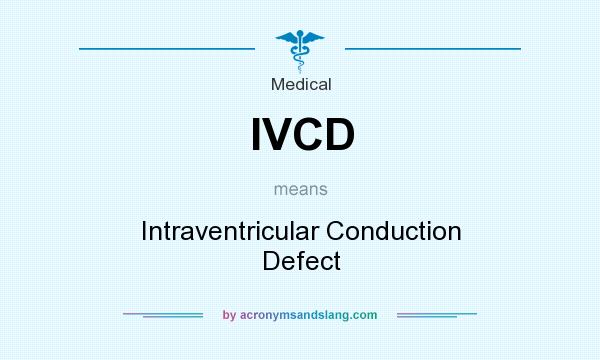

2012 60:1297–313.ĭickstein K, Vardas PE, Auricchio A, Daubert JC, Linde C, Mc Murray J, et al.
#IVCD CONTRAST UPDATE#
2012 ACCF/AHA/HRS focused update of the 2008 guidelines for device-based therapy of cardiac rhythm abnormalities: a report of the American College of Cardiology Foundation/American Heart Association task force on practice guidelines. Tracy CM, Epstein AE, Darbar D, DiMarco JP, Dunbar SB, Estes NAM III, et al. 2016 ESC guidelines for the diagnosis and treatment of acute and chronic heart failure: the task force for the diagnosis and treatment of acute and chronic heart failure of the European Society of Cardiology (ESC) developed with the special contribution of the Heart Failure Association (HFA) of the ESC. Ponikowski P, Voors AA, Anker SD, Bueno H, Cleland JGF, Coats AJS, et al. Age, prognostic impact of QRS prolongation and left bundle branch block, and utilization of cardiac resynchronization therapy: findings from 14,713 patients in the Swedish Heart Failure Registry. Lund LH, Benson L, Stahlberg M, Braunschweig F, Edner M, Dahlstrom U, et al.


Effectiveness of cardiac resynchronization therapy by QRS morphology in the multicenter automatic defibrillator implantation trial-cardiac resynchronization therapy (MADIT-CRT). Zareba W, Klein H, Cygankiewicz I, Hall WJ, McNitt S, Brown M, et al. Cardiac-resynchronization therapy for the prevention of heart-failure events. Moss AJ, Hall WJ, Cannom DS, Klein H, Brown MW, Daubert JP, et al. An individual patient meta-analysis of five randomized trials assessing the effects of cardiac resynchronization therapy on morbidity and mortality in patients with symptomatic heart failure. Condensed abstractĪtypical left bundle branch morphology defined as QS or rS in lead V1, broad R waves in lead I, and aVL but with QS or rS in V5–V6 is associated with favorable echocardiographic response to CRT and displays similar survival rates to typical LBBB patients.Ĭleland JG, Abraham WT, Linde C, Gold MR, Young JB, Claude Daubert J, et al. This subgroup of IVCD should be considered for CRT. Patients with ALBBB may have a favorable echocardiographic response to CRT and display similar survival rates to typical LBBB. Cumulative 2-year survival was 88% in ALBBB, 86% in TLBBB, and 76% in OIVCD ( p value = 0.011). A multivariable model showed a lower likelihood of echocardiographic response in OIVCD and a similar likelihood in ALBBBB compared to TLBBB. 75% and 72%, respectively, p = 0.01 for both comparisons). Rates of echocardiographic response were lower among those with OIVCD compared to those with LBBB and ALBBB (50% vs. Resultsīaseline clinical characteristics were similar among all the three groups. Endpoints were 2 years mortality and echocardiographic response, defined as a decrease of ≥ 10% in indexed LVESV or an increase of ≥ 5% in left ventricular ejection fraction at 1 year of follow-up. ECGs were classified into the following three groups: (a) typical LBBB (TLBBB) according to accepted guidelines ( n = 67) (b) IVCD with LBBB pattern criteria in V1, 1, and aVL but with QS or rS in V5–V6 which we defined as atypical LBBB (ALBBB) ( n = 74) and (c) all other IVCD (OIVCD) patterns ( n = 98). MethodsĬonsecutive baseline ECGs of 239 patients implanted between 20 with CRT were analyzed. However, IVCD pattern is heterogeneous, and it is possible that QRS patterns may also respond to CRT. Response to cardiac resynchronization therapy (CRT) is well-established in patients with typical left bundle branch block (LBBB) but modest or even negative in those with intraventricular conduction delay (IVCD).


 0 kommentar(er)
0 kommentar(er)
